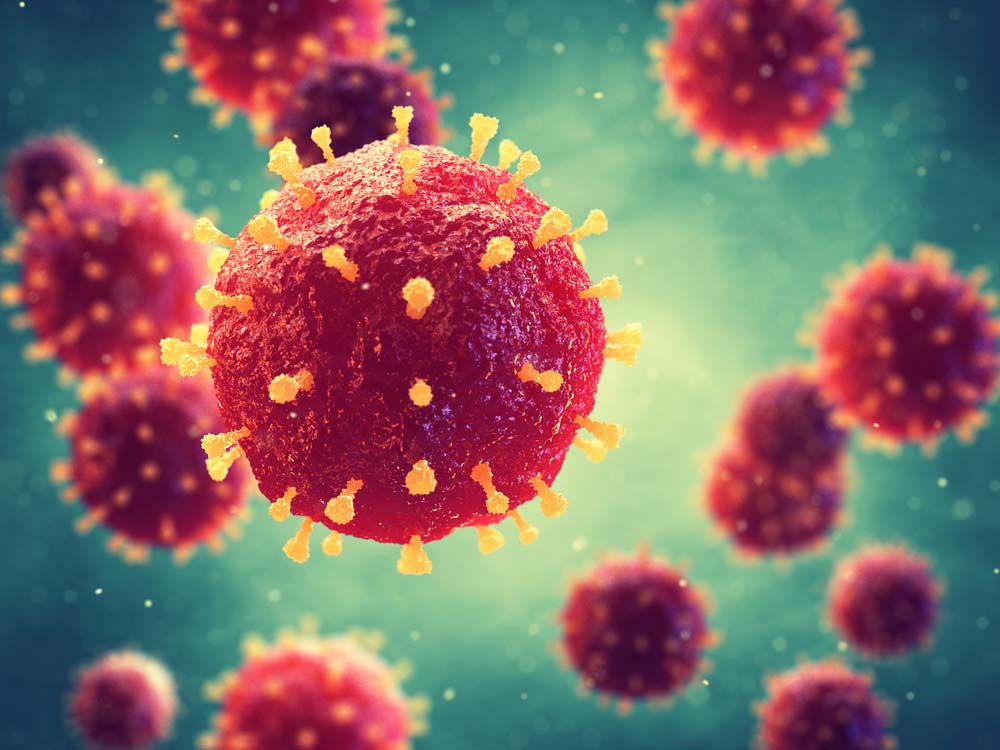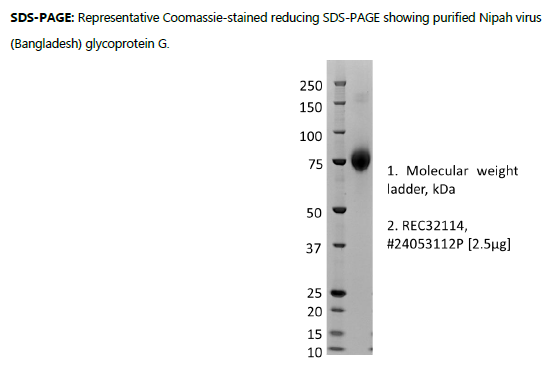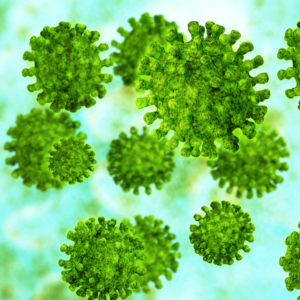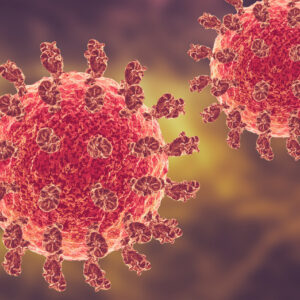Nipah virus (Bangladesh) glycoprotein G
Price range: $524.21 through $2,227.90 excl. VAT
Henipavirus nipahense (Bangladesh) glycoprotein G produced in HEK293 cells and purified from culture supernatant. A C-terminal purification handle was cleaved using TEV protease, and both protease and tag were removed during the purification process.
Nipah virus (Bangladesh) glycoprotein G
Henipavirus nipahense (Bangladesh) glycoprotein G produced in HEK293 cells and purified from culture supernatant. A C-terminal purification handle was cleaved using TEV protease, and both protease and tag were removed during the purification process.
Nipah virus (Bangladesh) glycoprotein G
- Recombinant Henipavirus nipahense (Bangladesh) glycoprotein G produced in HEK293 cells (Accession Number: AEZ01397.1).
- Strain/Isolate: NIVBGD2010FARIDPUR
- Untagged
- Presented as liquid in in DPBS buffer
BACKGROUND
Nipah virus (NiV) is an enveloped, single-stranded, negative-sense RNA virus that belongs to the Henipavirus genus, a member of the Paramyxoviridae family. The first recognized outbreak of NiV occurred in Malaysia in 1998/1999, affecting both pigs and humans (CDC 2024). Later outbreaks in Bangladesh and India were primarily linked to consuming fruits or fruit products contaminated with the urine or saliva of infected fruit bats. Human-to-human transmission was reported in both regions, particularly among family members and caregivers of infected patients. The symptoms of Nipah virus infection in humans can include rapidly developing fever, abdominal pain, nausea, vomiting, acute respiratory syndrome, and severe encephalitis, which is fatal in a high percentage of cases. Diagnosis of Nipah virus infection can be challenging due to its non-specific early symptoms. However, early detection is critical to improve the chance of survival, prevent transmission, and contain an outbreak (WHO 2024).
The Henipavirus nipahense glycoprotein G (NiV-G) is a crucial component in the infection process of the Nipah virus. This protein facilitates the attachment of the virus to host cells. NiV-G, along with the fusion (F) glycoprotein, mediates membrane fusion, allowing the virus to enter the host cell (Quarleri et al.,2022).
REFERENCES
- CDC 2024- Nipah virus: Facts for Clinicians
- World Health Organization (WHO) 2024 – Nipah virus
- Quarleri, J., Galvan, V. & Delpino, M.V. Henipaviruses: an expanding global public health concern?. GeroScience 44, 2447–2459 (2022).



![Influenza A [A/Hong Kong/45/2019 (H3N2)]](https://thenativeantigencompany.com/wp-content/uploads/2018/05/Misc-Virus-122-300x300.jpg)

